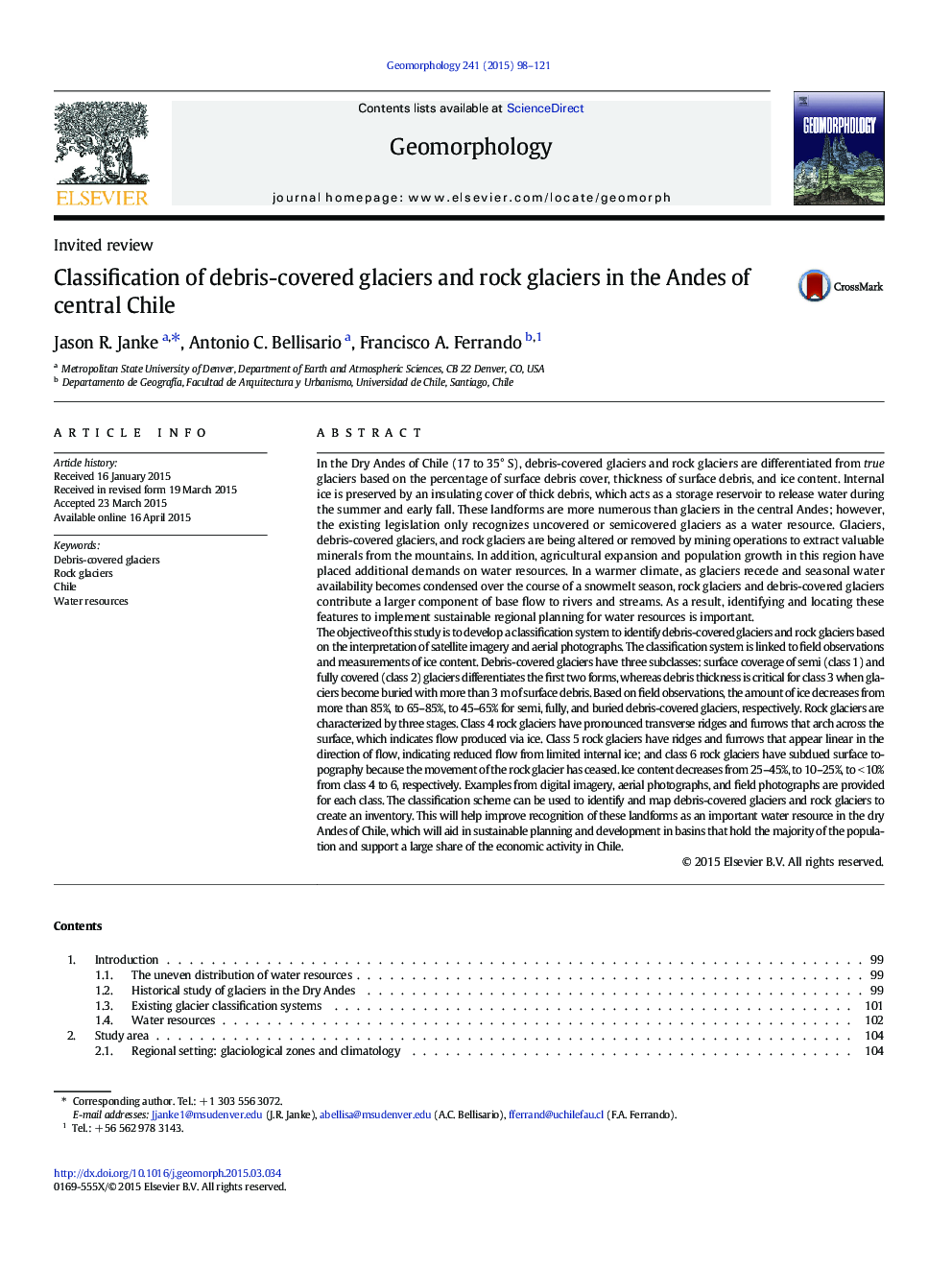| کد مقاله | کد نشریه | سال انتشار | مقاله انگلیسی | نسخه تمام متن |
|---|---|---|---|---|
| 6432134 | 1635408 | 2015 | 24 صفحه PDF | دانلود رایگان |
- We classified debris-covered glaciers and rock glaciers in the central Andes.
- Debris-covered glaciers have ice content ranging from more than 85% to 45%.
- Rock glaciers have less than 45% ice content.
- Terrestrial photos and satellite imagery are utilized to provide examples of each form.
- This classification system will help planners evaluate available water resources.
In the Dry Andes of Chile (17 to 35° S), debris-covered glaciers and rock glaciers are differentiated from true glaciers based on the percentage of surface debris cover, thickness of surface debris, and ice content. Internal ice is preserved by an insulating cover of thick debris, which acts as a storage reservoir to release water during the summer and early fall. These landforms are more numerous than glaciers in the central Andes; however, the existing legislation only recognizes uncovered or semicovered glaciers as a water resource. Glaciers, debris-covered glaciers, and rock glaciers are being altered or removed by mining operations to extract valuable minerals from the mountains. In addition, agricultural expansion and population growth in this region have placed additional demands on water resources. In a warmer climate, as glaciers recede and seasonal water availability becomes condensed over the course of a snowmelt season, rock glaciers and debris-covered glaciers contribute a larger component of base flow to rivers and streams. As a result, identifying and locating these features to implement sustainable regional planning for water resources is important.The objective of this study is to develop a classification system to identify debris-covered glaciers and rock glaciers based on the interpretation of satellite imagery and aerial photographs. The classification system is linked to field observations and measurements of ice content. Debris-covered glaciers have three subclasses: surface coverage of semi (class 1) and fully covered (class 2) glaciers differentiates the first two forms, whereas debris thickness is critical for class 3 when glaciers become buried with more than 3 m of surface debris. Based on field observations, the amount of ice decreases from more than 85%, to 65-85%, to 45-65% for semi, fully, and buried debris-covered glaciers, respectively. Rock glaciers are characterized by three stages. Class 4 rock glaciers have pronounced transverse ridges and furrows that arch across the surface, which indicates flow produced via ice. Class 5 rock glaciers have ridges and furrows that appear linear in the direction of flow, indicating reduced flow from limited internal ice; and class 6 rock glaciers have subdued surface topography because the movement of the rock glacier has ceased. Ice content decreases from 25-45%, to 10-25%, to < 10% from class 4 to 6, respectively. Examples from digital imagery, aerial photographs, and field photographs are provided for each class. The classification scheme can be used to identify and map debris-covered glaciers and rock glaciers to create an inventory. This will help improve recognition of these landforms as an important water resource in the dry Andes of Chile, which will aid in sustainable planning and development in basins that hold the majority of the population and support a large share of the economic activity in Chile.
Journal: Geomorphology - Volume 241, 15 July 2015, Pages 98-121
